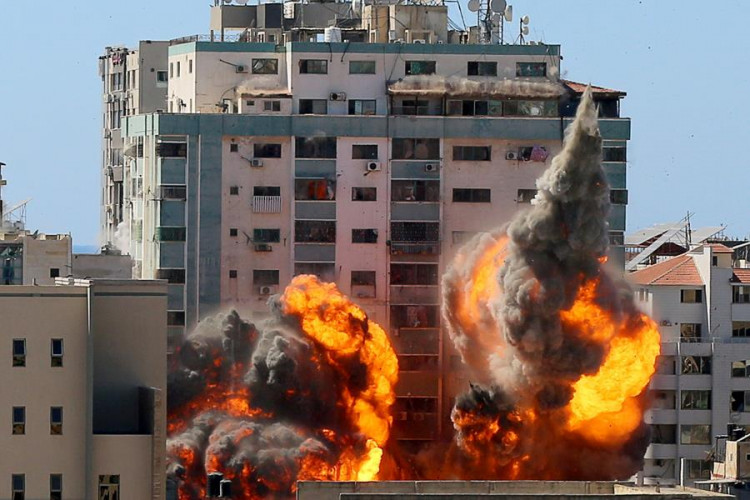n a tumultuous time marked by cross-border skirmishes, the Israeli military has heightened its offensive stance, deploying airstrikes against Hezbollah targets within Lebanon in retaliation for attacks on its positions along the Lebanese frontier. Hezbollah's bold claims of using a potent missile type not previously employed in the ongoing clashes underscore the escalation in hostilities-the fiercest since the 2006 conflict.
The Israeli Defense Forces (IDF) confirmed the air assaults were a countermeasure to the assault initiated from Lebanese grounds, supported by artillery and tank fire. A Lebanese source aligned with Hezbollah's strategy mentioned the use of a robust missile, targeting Israeli bases across Ayta al-Shaab and Rmeich-indicative of Hezbollah's resolve to intensify its operations.
The backdrop to this escalation is the ongoing war with Hamas, which began on October 7, drawing Hezbollah into a supporting role. The leader of Hezbollah, Sayyed Hassan Nasrallah, has hinted at a deeper involvement depending on the progression of the conflict in Gaza and Israeli actions toward Lebanon, while nearly 60 of its fighters have fallen amidst the confrontations.
الغارة الإسرائيلية بين عيتا ورميش pic.twitter.com/9j70cel77G — bintjbeil.org (@bintjbeilnews) November 4, 2023
On the ground in Lebanon, civilians witness a notable intensification in the Israeli bombardment. Social media footage and local testimonies portray the severity of the strikes, with the IDF citing the targeting of "terrorist infrastructure, rocket depots, and Hezbollah compounds."
The Israeli Prime Minister, Benjamin Netanyahu, has cautioned Hezbollah against further provocations, threatening overwhelming retaliatory strikes that could bring considerable destruction upon Lebanon.
On the Lebanese side, Hezbollah has announced that its fighters executed attacks on multiple Israeli military posts using "suitable rockets and weapons," resulting in direct hits and damage to technical equipment. Specifically, the use of Burkan rockets-known for their substantial warheads-marks a significant upgrade in the firepower employed by Hezbollah. These rockets have been previously utilized by Hezbollah and Syrian forces in the Syrian conflict.
Hezbollah's media outlets have also reported the downing of an Israeli spy balloon, amplifying the sentiment of a full-scale engagement at the Lebanon-Israel border.
The Israeli military has responded on social media platforms, detailing their comprehensive military response that targets the origins of the fire from the Lebanese side, including Hezbollah's arms storage, infrastructure, and operational posts.
This series of events is the latest peak in the tensions that have escalated following the Hamas attack on October 7, which led to a significant number of civilian and military casualties. Israel's extensive counter-operations in Gaza have resulted in a high number of civilian fatalities as well.
Hezbollah's campaign against Israeli positions started promptly after the initial hostilities, initially concentrated in the contentious Chebaa Farms region and then expanding along the entire Lebanon-Israel boundary. The death toll within Hezbollah's ranks has been steadily increasing, and the conflict has also claimed the lives of civilians, including journalists, and several Palestinian combatants.
As the situation remains fluid, the international community watches with concern, hoping for a de-escalation before the violence engulfs the region in a broader conflict.






